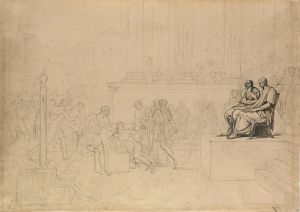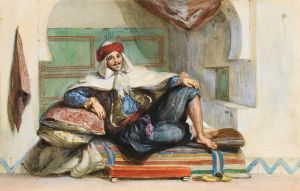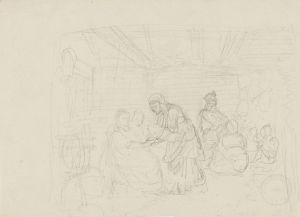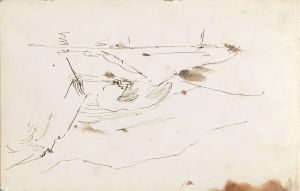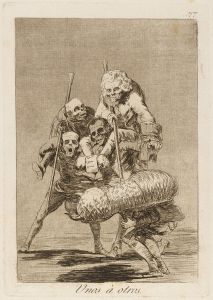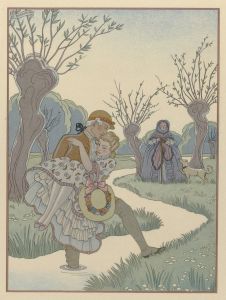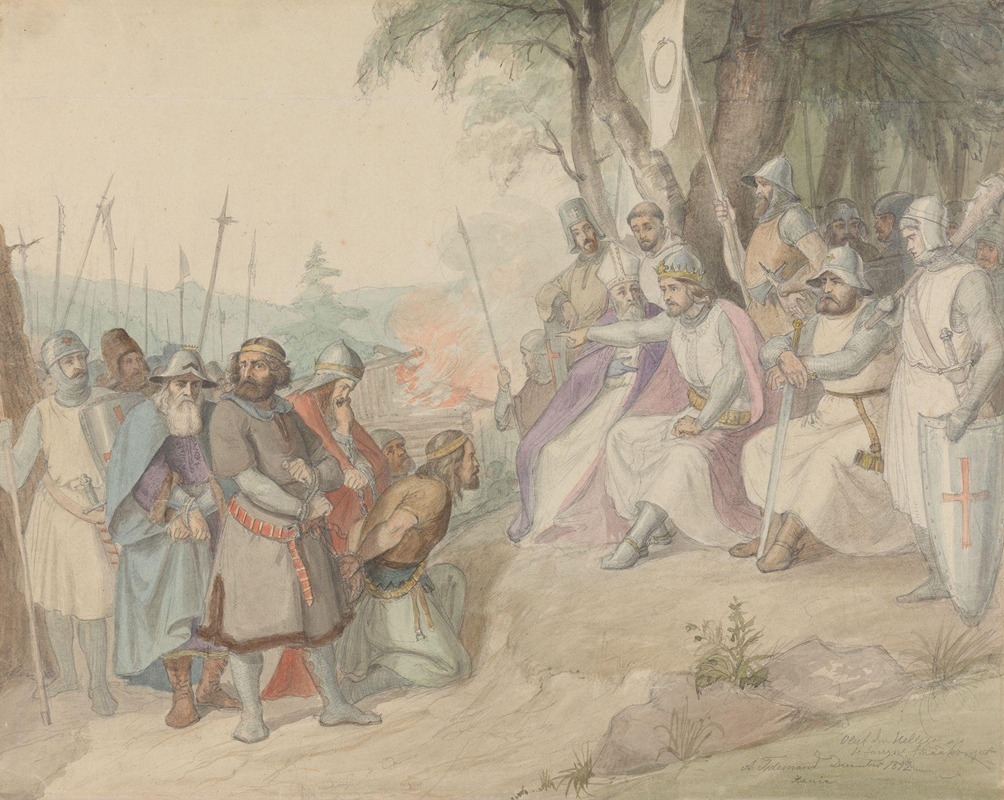
Olav den hellige og de fangne småkonger
A hand-painted replica of Adolph Tidemand’s masterpiece Olav den hellige og de fangne småkonger, meticulously crafted by professional artists to capture the true essence of the original. Each piece is created with museum-quality canvas and rare mineral pigments, carefully painted by experienced artists with delicate brushstrokes and rich, layered colors to perfectly recreate the texture of the original artwork. Unlike machine-printed reproductions, this hand-painted version brings the painting to life, infused with the artist’s emotions and skill in every stroke. Whether for personal collection or home decoration, it instantly elevates the artistic atmosphere of any space.
Adolph Tidemand's painting Olav den hellige og de fangne småkonger (translated as Olaf the Holy and the Captive Petty Kings) is a notable work by the Norwegian artist, created in 1859. Tidemand, a central figure in the Norwegian Romantic Nationalism movement, is best known for his depictions of Norwegian history, folklore, and rural life. This painting reflects his interest in historical and cultural themes, particularly those tied to Norway's medieval past.
The artwork portrays King Olaf II of Norway, later canonized as Saint Olaf, a significant figure in Norwegian history and a symbol of the Christianization of the country. The scene depicted in the painting is based on a historical episode where Olaf, after consolidating his power, subdued various local chieftains or petty kings who had resisted his rule. These individuals are shown as captives, emphasizing Olaf's authority and the unification of Norway under his reign. The painting captures a moment of tension and drama, with the figures arranged to highlight the contrast between Olaf's commanding presence and the subdued demeanor of the captives.
Tidemand's style in this work reflects his academic training and his focus on historical accuracy, as he often conducted extensive research to ensure the authenticity of his depictions. The painting is characterized by its detailed rendering of costumes, expressions, and gestures, which help convey the narrative and emotional weight of the scene. The use of light and shadow further enhances the dramatic atmosphere, drawing attention to Olaf as the central figure.
This painting is part of Tidemand's broader body of work that sought to celebrate Norway's cultural heritage and historical identity during a time when the country was striving to assert its independence and national pride. While the exact location of the painting today is not specified in available records, Tidemand's works are widely recognized and held in high regard, with many displayed in prominent Norwegian museums such as the National Museum in Oslo.
As with many of Tidemand's historical paintings, Olav den hellige og de fangne småkonger serves as both an artistic achievement and a reflection of the 19th-century interest in Norway's medieval past, contributing to the nation's cultural and historical narrative.





